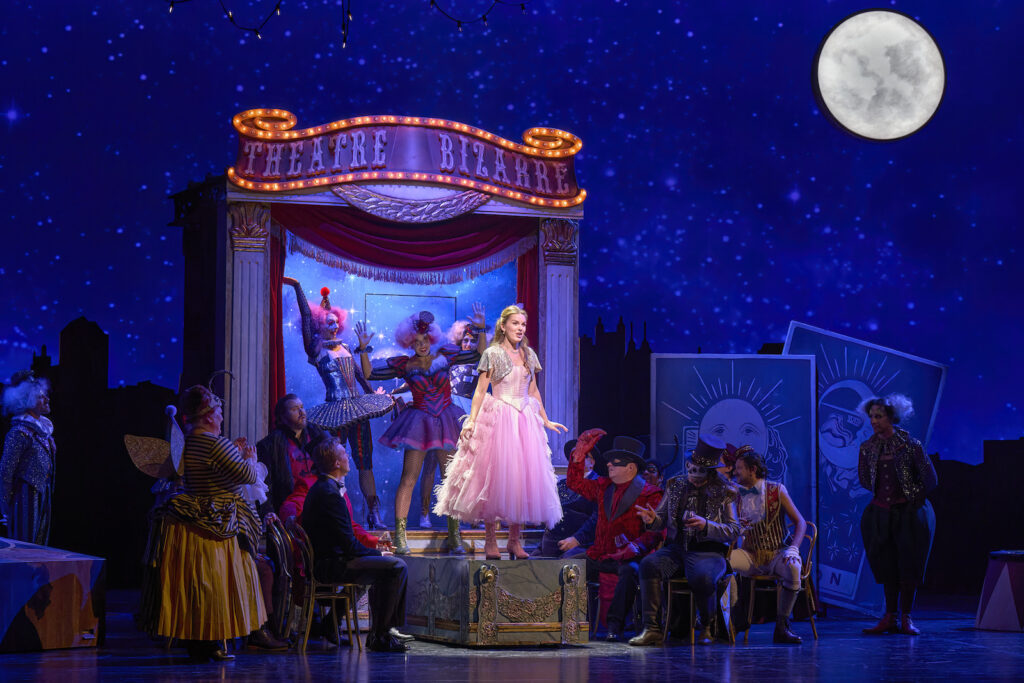Of the twelve operas penned by Charles Gounod, tireless arbiter of mid-19th century French Romanticism, only two would avoid plummeting into obscurity. Faust (1859), an intensely sentimental approach to Goethe’s epic tragedy and Roméo et Juliette (1867), a distilled, fluid rendering of Shakespeare’s sprawling antecedent, burst free from the jumble of tumbled genres and fraught storytelling so characteristic of Gounod’s earlier stage output.
That his operatic legacy endures despite the meagreness of his active catalogue is testament to a career that spanned over half a century of foundational effort. Building the basis of what would become a uniquely Gallic style of epic music theatre — lustrous, refined, sensual — Gounod carefully wrapped his work in layered, quintessentially French performative ideals, his heartfelt piety and penchant for melodrama often on overt display.
The composer’s influence on an entire generation of fin de siècle practitioners —Georges Bizet, Gabriel Fauré and Jules Massenet among them — was hugely profound. His lush harmonies and glowing orchestration reflected in a multitude of dynamic, updated settings were essentially reborn, extricated from the innumerable stifling Second Empire strictures that the elder artist had struggled to overcome during his lifetime with varying degrees of success.
“Gounod, for all his weaknesses, is necessary,” Claude Debussy would later remark somewhat grudgingly though not without a note of respect. “His art represents a moment in French sensibility. Whether one wants to or not, that kind of thing is not forgotten.”
Much the same could be said of director Amy Lane’s brooding, unapologetically revisionist Roméo et Juliette currently on offer at the Canadian Opera Company’s dazzling Four Seasons Centre. Brash, capricious, eccentric, Lane’s highly conceptualized depiction of mad love in savage times swings wildly from the dramatically animated to the idiosyncratic, a troubled and troubling emotive journey through moonlight and darkness to a place of timeless tragedy. Gounod is amply served albeit with varying degrees of effectiveness. Lane treads a prickly path through a tangle of thorny pre-existing dramatic values.
Partnering with longtime collaborators, librettists Jules Barbier and Michel Carré — the pair would eventually produce a total of eight libretti for the industrious maestro — Gounod’s unabashedly romantic Roméo and Juliette relies on a textual formula where fevered passion is the first and foremost order of the day.
Shakespeare’s deeper, more sharply conveyed piece, by way of contrast, represents love as a primal response to existential disorder, the roiling civic chaos raging around his namesake protagonists consciously engineered by a heedless gerontocracy all too willing to sacrifice its young to feed the corrupted elite’s monstrous need for status. Twisted notions of justice and honour fuel explosive eruptions of violence, authority and privilege reaffirmed at bloody sword point. Context and atmosphere is everything here.
Lane does admirable work adding a measure of menacing Shakespearean visual dimension to Gounod’s rather more superficial treatment. Set and costume designer Emma Ryott and lighting designer Charlie Morgan Jones play pivotal roles. Sunless, turn of the century Manhattan replaces 16th century fair Verona. A bacchanalian carnival-themed costume party supplants an aristocratic masked ball. A gritty Lower East Side streetscape, all wrought iron fire escapes and grubby tenement blocks, consigns ornamental balconies and noble palazzi to the demolition yard of history.
By and large artistic values are consistently high in this turbulent regie piece. But not every aspect of the darkly churning aesthetic so resolutely on display here advances the cause of heightened dramatic resonance.
The Duke of Verona’s murder in the dying seconds of Act III at the knife-wielding hands of a shadowy mystery woman — possibly an enraged Lady Montague, possibly the oft-mentioned Rosaline, Roméo’s offstage bride-to-be — adds an entirely unnecessary layer of bewilderment to the production. A stately troupe of liveried attendants ready Juliette for her Capulet-sanctioned marriage to Paris, slow-clapping her to the altar for reasons utterly unknown.
Lane’s fabrication of curiously obtuse sidebars to through story plus a certain degree of sloppiness in matters of stagecraft and blocking can test the limits of patience at times. Mercutio and Tybalt’s bloodless knife fight feels decidedly inauthentic. But in the final analysis, when the seasoned British director’s freshly reimagined Roméo et Juliette has finally crested its story arc, it is the music in this COC import from Sweden’s Malmö Opera that strikes closest to the heart.
Gounod frames the bulk of his massively affecting score with four ringing duets sung by his two principals at pivotal moments during the course of his three-hour plus drame lyrique, each piece quite different in melodic form and texture. The first, the composer’s richly elaborated Ange adorable, occurs when Roméo and Juliette first meet at the ball and is identified by Gounod as Madrigal (à deux voix). The second, a closely honed expression of shared adoration, Ô nuit divine underlines the ageless balcony scene. Duet number three, Nuit d’hyménée, sung in Juliette’s bedchamber, begins with an almost hymn-like celebration of mutual heavenly joy, ending in a tender outpouring of bittersweetness as the faint strains of a lark sound the end of the star-crossed lovers’ first and last night of passion. The final duet, Viens! Fuyons au bout du monde!, a triumphant declaration of eternal devotion in the face of grim death, ends the opera on vaulting notes of immense poignancy.
All selections are delivered on stage with moving commitment and skill in this fundamentally striking, musically overwhelming Roméo et Juliette.
Appearing as Roméo, tenor Stephen Costello graces the evening with any number of memorable solo appearances despite a certain degree of stiff stage manners and awkward pose and posture. Endowed with a robust silvery instrument more Italianate than haute contre-influenced, Costello impresses, spinto friendly and soaring yet flexible enough to convey the broad sweep of undiluted colour and emotion so characteristic of French grand opera. Voicing one of the most celebrated tenor standards in the repertoire, Gounod’s magnificent Ah, lève-toi soleil, Costello unquestionably rises to the occassion.
Singing Juliette, Paris-based Russian soprano Kseniia Proshina, graces the proceedings with a fine, agile performance of unremitting virtuosity and stamina, skillfully moulding her endlessly adaptable lyric soprano to fit the towering coloratura and dramatic soprano demands of a notoriously taxing role. Her trippingly stylish rendition of Juliette’s famous Act I arietta, Je veux vivre, inventively written in waltz time, is positively delightful, her closing double cadenza, sensational.
Of particular note in a nimble cast populated by an entire cohort of Canadians, baritone Gordon Bintner as Mercutio and mezzo-soprano Alex Hetherington as Stéphano contribute two of the most pleasurable performances of the evening. Gifted by Gounod with the preposterously comic ballad, Mab, la reine des mensonges, Bintner struts and mugs with bold abandon, Hetherington betraying much the same abundant self-confidence. Stéphano’s folky Que fais-tu, blanche tourterelle, in this winning singer actor’s hands, becomes her character’s theme song, witty, sparkly, bitingly sarcastic.
Owen McCausland is Tybalt. Ben Wallace is Paris. Mark Stone appears as Count Capulet. Megan Latham is Gertrude. Justin Welsh sings Grégorio. Robert Pomakov and Alex Halliday are Frère Laurent and the Duke of Verona respectively. Angelo Moretti is Benvolio.
The always stirring Canadian Opera Company Chorus sings with vast, unbridled enthusiasm, Roméo et Juliette’s stern, Shakespearean-derived prologue dispatched with great energy tinted with foreboding. Visiting conductor Yves Abel leads the magnificent Canadian Opera Company Orchestra in a superb performance of Gounod’s glorious music.
A Roméo et Juliette for here and now.


